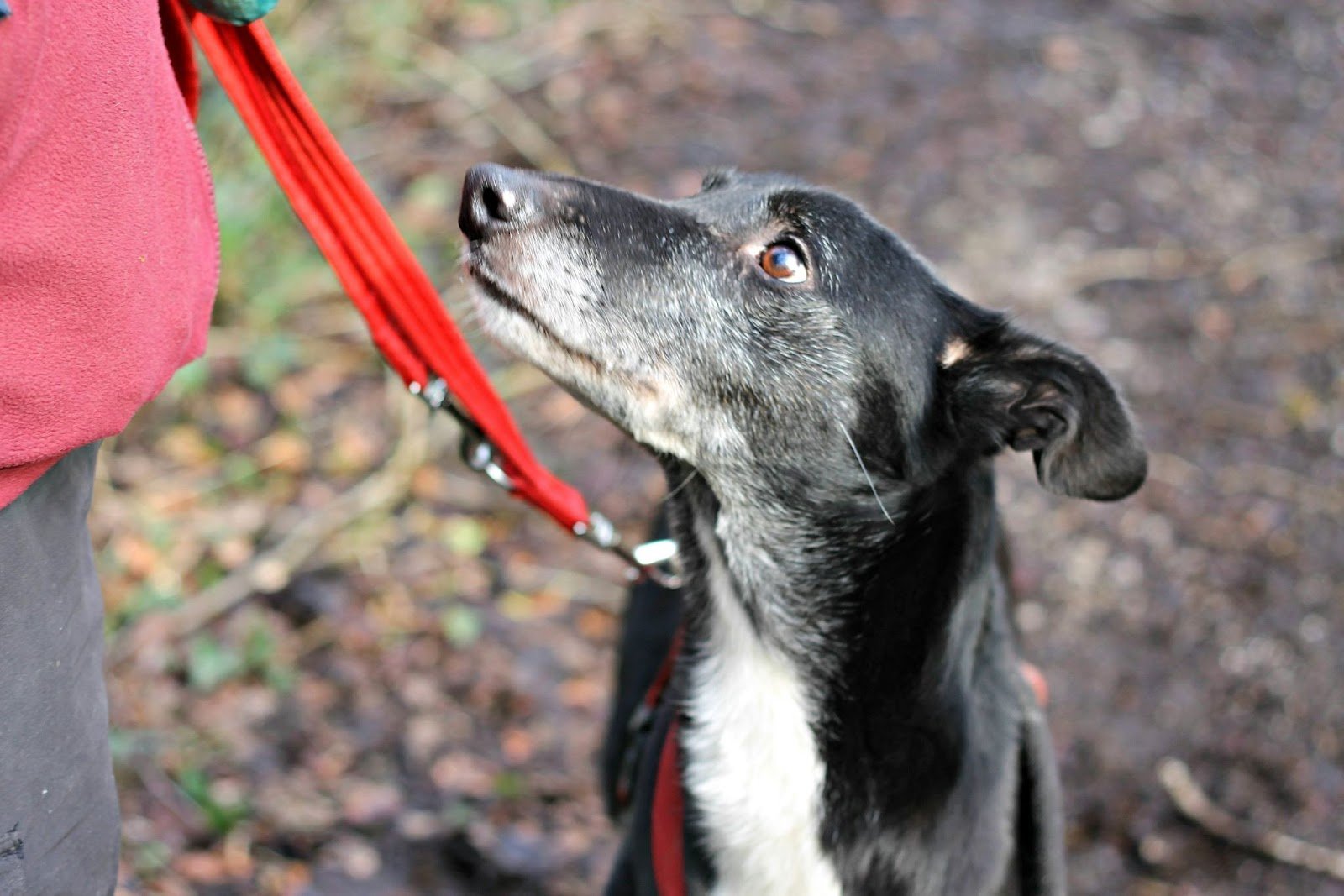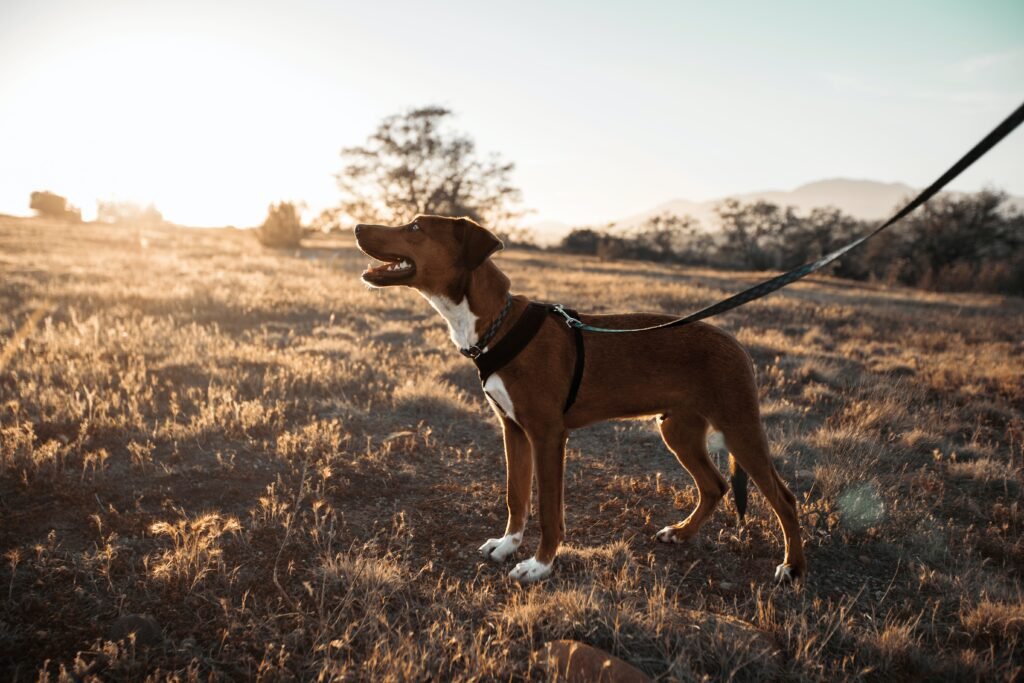Choosing the right leash length for your dog is important for both their safety and your comfort. While the market offers a wide array of leash types, understanding the various leash lengths and intended uses can help you make an informed decision. In this guide, we will explore different leash types by length, discuss when to use them, and provide tips for selecting the right leash for your needs.
Leash Types By Length:
Short Leashes:
Short leashes are typically 4 to 6 feet long and are ideal for walking in crowded areas or when you need more control over your dog. They are also great for training purposes for several key reasons. First, short leashes provide better control over dogs which allows the trainer to guide and redirect the dog’s movements more effectively. This control is crucial when teaching commands or correcting unwanted behaviors. Additionally, the shorter length keeps the dog closer to the trainer, promoting focus and reducing distractions from surroundings. This proximity also allows for more immediate corrections, which can be essential in reinforcing desired behaviors. If you’re looking to train your dog, check out our article on how to leash train a dog.
Standard Leashes:
Standard leashes range from 6 to 8 feet long and offer a range of benefits. One key advantage is the balance they strike between freedom and control. With a standard leash, dogs have enough room to move around comfortably while remaining within reach of their owners. This allows for effective guidance and communication. Standard length is also practical for everyday walks in various environments from parks to sidewalks. This length provides enough slack for dogs to sniff and explore while ensuring they stay safe and under control. Additionally, standard leashes are versatile and suitable for dogs of all sizes, making them a convenient option for owners with multiple pets or those looking for a reliable, all-purpose leash.
Long Dog Leashes:
Long-sized dog leashes typically range from 15 to 30 feet and offer unique benefits for both dogs and their owners. These leashes provide dogs with a greater sense of freedom to explore while remaining under the control of their owners. This extended length is particularly useful for training purposes and allows dogs to practice commands such as recall and stay from a distance. Long leashes also enable dogs to engage in more natural behaviors, such as sniffing and roaming, which can be beneficial for their mental and physical well-being. Additionally, long leashes are ideal for use in open, safe areas such as parks or beaches. This allows dogs to enjoy more freedom without the risk of getting lost or running into hazards.

What is the Best Length Leash for Everyday Walking:
The best length for everyday walking depends on various factors, including the dog’s size, behavior, and the surrounding environment. For most dogs, a standard leash length of about 6 feet is ideal for everyday walking. This length provides enough slack for dogs to explore while still allowing you to maintain control and ensure their safety. Longer leashes can be suitable for open, safe areas where dogs can have more freedom to roam, but they may be less practical in crowded or urban environments. Shorter leashes offer more control and are ideal for walking in busy areas.
For dogs that are still learning to walk politely on a leash or tend to pull, a shorter leash may be more appropriate as it allows for better control and correction. As your dog becomes more accustomed to walking on a leash and improves their behavior, you can consider gradually increasing the length of the leash to give them more freedom. By considering your dog’s behavior and the walking environment, you can choose the best length for a dog leash for everyday walking that ensures both your dog’s safety and enjoyment.
What is the Best Length Leash for Running with a Dog:
The best length leash for running with a dog depends on several factors, including the size and behavior of the dog, as well as your running style and preferences. For most runners, a hands-free leash that attaches around the waist is ideal for running with a dog. These leashes are typically adjustable and allow for a comfortable, secure fit, freeing up your hands for a more natural running motion. Hands-free leashes also provide a buffer between you and your dog, reducing the risk of injury from sudden movements or changes in direction.
In terms of length, a leash that is around 6 feet long is generally recommended for running with a dog. This length provides enough space for your dog to run alongside you comfortably without being too long that it becomes a tripping hazard or gets tangled around your legs. Additionally, a shorter leash length can help you maintain better control over your dog, especially in busy or crowded areas. However, it’s essential to consider your dog’s behavior and training level when choosing a leash length for running. If your dog tends to pull or veer off course, you may prefer a shorter leash for better control. Overall, the best length leash for running with a dog is one that allows for a comfortable and safe running experience for both you and your furry companion.

Is a Retractable Leashes Right For My Dog?
Retractable leashes can be a convenient option for some dog owners, but they also come with certain risks and considerations. One of the main advantages of retractable leashes is that they allow dogs more freedom to roam and explore while still giving owners some control over the leash length. This can be beneficial in open, safe areas where dogs can enjoy a greater range of movement. Retractable leashes also typically have a locking mechanism that allows you to control the length of the leash, which can be useful for situations where you need to keep your dog closer, such as when crossing a busy street.
However, retractable leashes also have some drawbacks. One concern is that they can be difficult to control, especially with larger or stronger dogs. The thin, cord-like design of retractable leashes can also pose a safety risk, as they can easily tangle around objects or people, potentially causing injury. Additionally, the locking mechanism on retractable leashes can fail, leading to situations where the leash extends too far or retracts unexpectedly, which can startle or injure your dog.
Choosing the Right Leash Length for Your Dog:
In conclusion, the length of your dog’s leash depends on various factors, including your dog’s behavior, the environment you are in, and your specific needs. Short leashes are ideal for crowded areas and training, while standard leashes provide a balance of freedom and control for everyday walking. Long leashes are great for training and giving your dog more freedom, but should be used in safe, open areas. When running with your dog, a hands-free leash is the best option for comfort and safety. If you need help making a decision, check out our article on the topbest dog leashes! Always consider your dog’s safety and behavior when choosing a leash length, and remember to use it responsibly to ensure a pleasant walking experience for both you and your furry friends.

